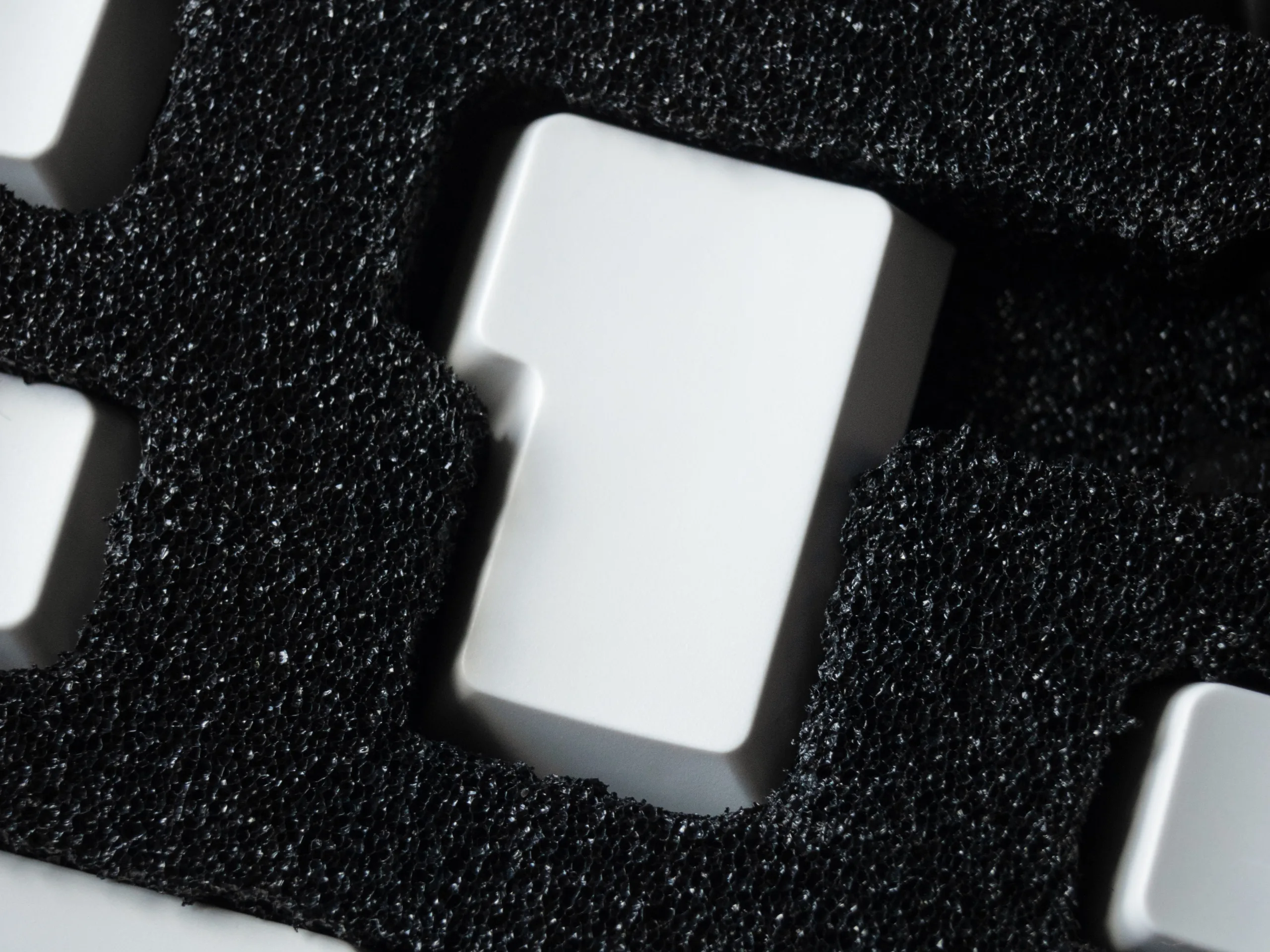
Language and Physical Layouts
Introduction
In over 300,000 years, humankind has yet to agree on a universal keyboard layout – and that is a good thing ! It makes perfect sense that a greek typist wouldn’t use the same layout as an american one. Still, to simplify manufacturing and user experience, certain standards have been established when it comes to key arrangements, language layouts, and keyboard formats. This guide provides an overview of the most common standards shaping modern mechanical keyboard design.
1. ANSI & ISO, an ongoing rivalry
104 or 105 keys? Large or small Enter key? ANSI and ISO are the two most widely used physical keyboard layouts. In Europe, ISO is the norm, though ANSI models — more common in the US and Canada — do appear on certain laptops and imported keyboards.
ANSI
In the world of mechanical keyboards, the ANSI layout (American National Standards Institute) has long been – and still is – the most widespread, mainly due to the more developed North American market.
This layout is defined by a rectangular Enter key 2.25U1 long, with a 1.5U key above and a Shift key on the left side also at 2.25U.
1 This refers to the standard unit, defining the surrounding space of a cap with 1U = 19.05mm. Curious to learn more ? Check out our other guide to answer your questions !
ANSI
In the world of mechanical keyboards, the ANSI layout (American National Standards Institute) has long been – and still is – the most widespread, mainly due to the more developed North American market.
This layout is defined by a rectangular Enter key 2.25U1 long, with a 1.5U key above and a Shift key on the left side also at 2.25U.
1 This refers to the standard unit, defining the surrounding space of a cap with 1U = 19.05mm. Curious to learn more ? Check out our other guide to answer your questions !
ISO
As mentioned earlier, the ISO (International Organisation for Standardisation) layout is most popular in Europe as it was designed to better support the region’s linguistic diversity.
Here the Entry key is shaped like a reversed L, with a shorter Shift key on the left at 1.25U. This leaves room for an extra 1U key, bringing the total count to 105 keys – one more than ANSI.
2. Language or logical layouts
Now that we have covered the two main standard layouts, it’s time to look at language-specific key arrangements. Those are national standards regarding the choice and placement of characters, accents, numbers or symbols on keyboards.
The one french people might refer to as ‘AZERTY’ is officially known as ISO-FR. This specific layout was standardized by AFNOR (Association Française de Normalisation) in April 2019 (reference NF Z71-300) along the BEPO layout, meant to be more ergonomic and optimize fast-paced French typing while reducing muscle strain. Most European countries have their own layout: ISO-ES (Spain), ISO-DE (Germany), ISO-UK (United Kingdom), ISO-IT (Italy), and so on.
Because many mechanical keyboard cases and PCBs are not dual-compatible with both ISO and ANSI layouts, our keycap sets include the extra keys needed to switch from ISO to ANSI, regardless of the language layout selected.
Lastly, remember to match your keyboard’s language layout with your computer’s system settings. This can be adjusted in the language preferences of your operating system. One exception : the BÉPO layout isn’t preinstalled on Windows—it must be downloaded from the official BÉPO website.
3. Physical layouts
Let’s move on to physical layouts – or form factors – which define a keyboard’s overall size and keycounts. And there are many. But we’ve narrowed it down to the most common ones you’re likely to encounter :
100% or full size :
The classic format, found in offices and professional setups everywhere. It includes all standard keys, function rows, navigation keys, and a full numpad — making it ideal for data entry and general productivity.
Some full-size boards also feature four extra keys above the numpad. On custom mechanical keyboards, these are typically macro keys, often assigned to shortcuts like muting audio or launching apps.
100% or full size :
The classic format, found in offices and professional setups everywhere. It includes all standard keys, function rows, navigation keys, and a full numpad — making it ideal for data entry and general productivity.
Some full-size boards also feature four extra keys above the numpad. On custom mechanical keyboards, these are typically macro keys, often assigned to shortcuts like muting audio or launching apps.
80% or TKL (Tenkeyless)
Popular among gamers, the TKL layout is a full-size keyboard without the numpad—freeing up valuable desk space for the mouse and its mat – hence its name Tenkeyless (literally ten keys less).
75%
Seen as the sweet spot between functionality and compactness, the 75% form removes the least used keys from the 80% while retaining the function row, arrow keys, and navigation cluster- all arranged more tightly. Many modern 75% boards also feature a volume knob for added convenience.
75%
Seen as the sweet spot between functionality and compactness, the 75% form removes the least used keys from the 80% while retaining the function row, arrow keys, and navigation cluster- all arranged more tightly. Many modern 75% boards also feature a volume knob for added convenience.
65% et 60%
Favored by mechanical keyboard enthusiasts for their compact form and minimalist aesthetic, 65% and 60% layouts eliminate the function row. The 60% format goes further by also removing the navigation keys to further reduce clutter.
Ergonomic keyboards
Designed to reduce fatigue and the risk of repetitive strain injuries, ergonomic keyboards promote a more natural typing posture. They often feature split spacebars, tilted keys, ortholinear grids, or adjustable angles.
Ergonomic keyboards
Designed to reduce fatigue and the risk of repetitive strain injuries, ergonomic keyboards promote a more natural typing posture. They often feature split spacebars, tilted keys, ortholinear grids, or adjustable angles.